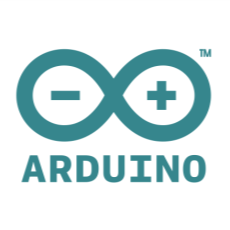Compare Products

|

|
Features * Programming - The Arduino/Genuino Uno can be programmed with the (Arduino Software (IDE)).
* Warnings - The Arduino/Genuino Uno has a resettable polyfuse that protects your computer's USB ports from shorts and overcurrent.
* Differences with other boards - The Uno differs from all preceding boards in that it does not use the FTDI USB-to-serial driver chip.
* Power - The Arduino/Genuino Uno board can be powered via the USB connection or with an external power supply.
* Memory - The ATmega328 has 32 KB (with 0.5 KB occupied by the bootloader). It also has 2 KB of SRAM and 1 KB of EEPROM (which can be read and written with the EEPROM library).
* Input and Output - See the mapping between Arduino pins and ATmega328P ports. The mapping for the Atmega8, 168, and 328 is identical.
* Communication - Arduino/Genuino Uno has a number of facilities for communicating with a computer, another Arduino/Genuino board, or other microcontrollers.
* Automatic (Software) Reset - Rather than requiring a physical press of the reset button before an upload, the Arduino/Genuino Uno board is designed in a way that allows it to be reset by software running on a connected computer.
|
Features * Debugging serial port - a root-level session is initiated to this serial port at power up. It can be accessed as a 3.3V serial port, 8-N-1, no handshaking.
* Android buttons - these duplicate the functions of the hardware buttons on many Android-based tablets and phones. In Android programming, these buttons have a special function.
* GPIO - four 3.3V GPIO pins.
* SPI - two dedicated SPI peripheral headers. J6 is the SPI2 peripheral; J7 is the SPI0 peripheral, which is also broken out to the appropriate pins on the Arduino-ish headers. SPI0 pins also provide access to two more UARTs and external interrupts, as well.
* Arduino-ish headers - these pins closely follow the functionality of the pins on standard Arduino-compatible boards: I2C, SPI, UART, PWM, and ADC. The mapping is the same as it would be on a standard Arduino-compatible, as well, making it easy to convert Arduino shields to work with pcDuino.
|
LanguagesC CPP |
LanguagesC Python |
Source TypeOpen
|
Source TypeClosed
|
License TypeOther |
License TypeOther |
OS Type |
OS Type |
Pricing
|
Pricing
|
X
Compare Products
Select up to three two products to compare by clicking on the compare icon () of each product.
{{compareToolModel.Error}}Now comparing:
{{product.ProductName | createSubstring:25}} X